Ocean Explorers
Stingrays & Manta Rays – 223 Species
Manta Rays are the largest species of ray growing up to 7m wide and weighing upwards of 1000kg! Due to their large body size they must eat 13% of their body weight in plankton every week. That’s a lot of plankton!
A stingray’s barb usually breaks off after use and can take up to a whole year to regrow, Stingrays avoid using this defence unless they feel it is absolutely necessary.
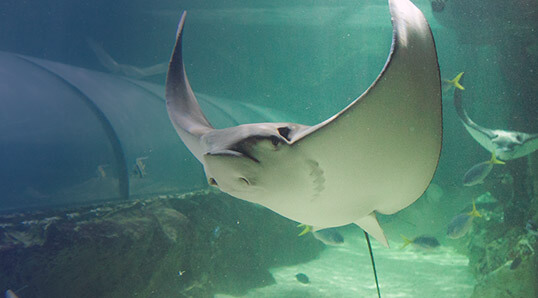
Manta Ray at SEA LIFE Melbourne Aquarium 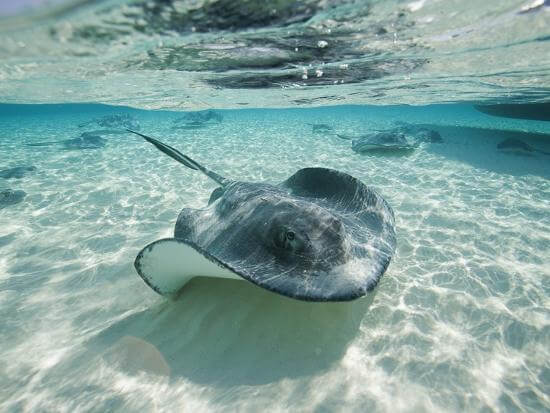
Sting Ray in shallow water
Skates – 270 Species
Skates are oviparous which means they lay eggs unlike stingrays who live birth. Fertilised skates eggs are deposited in hard cases sometimes called mermaid’s purse.
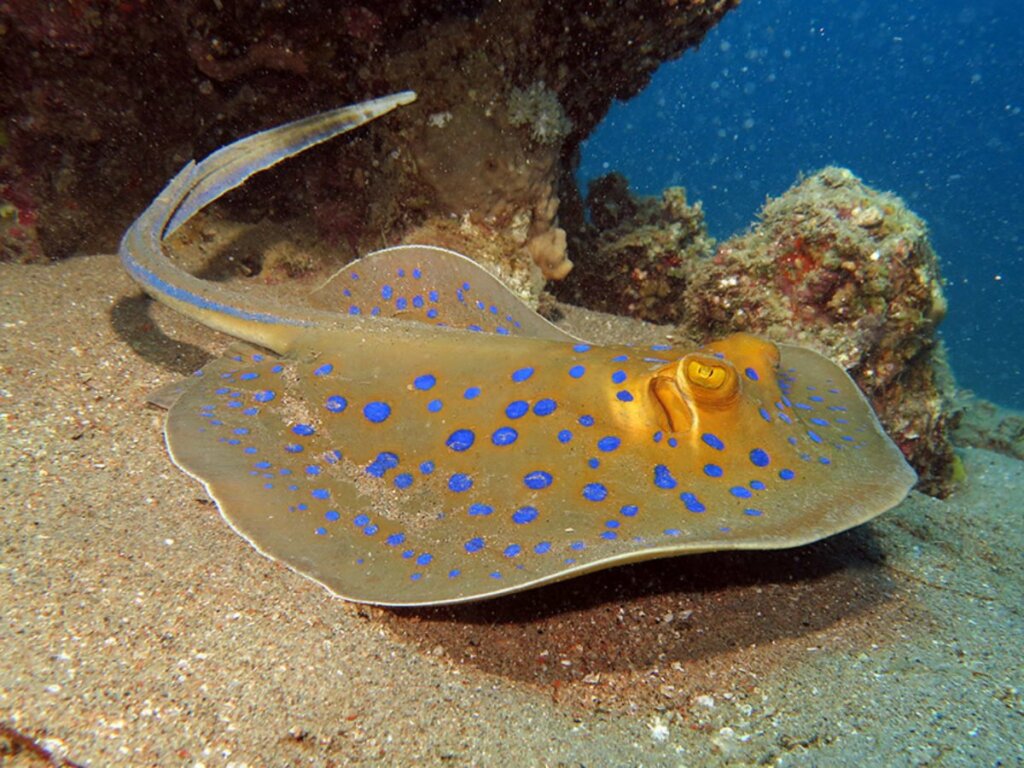
Skate Ray 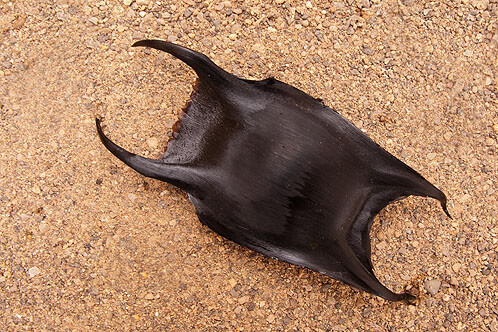
Mermaid’s Purse
Electric Rays – 69 Species
Electric rays are capable of producing an electric discharge, ranging from 8 to 220 volts, (depending on species) This is used to stun prey or as a defence mechanism.
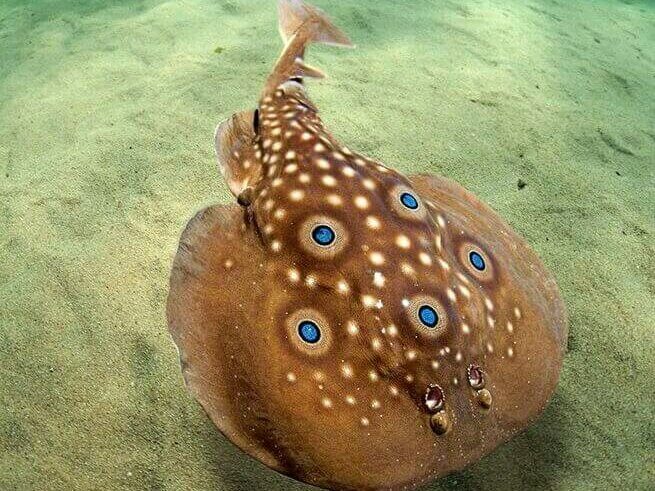
Sawfish – 6 Species
A sawfish’s snout is a long, flat blade that has about 20 teeth on either side. This snout may be used to catch fish, and also has electroreceptors to detect passing prey.
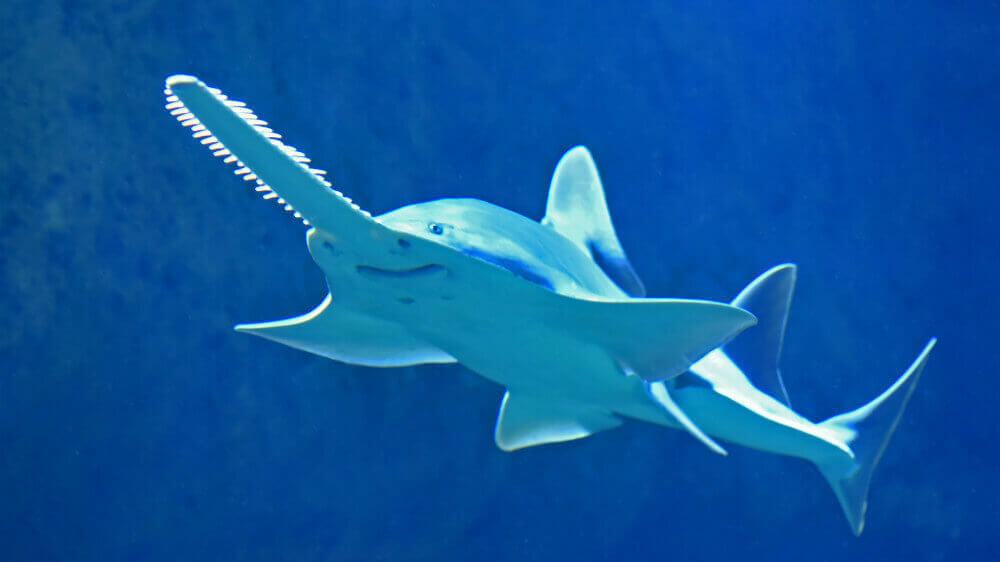
Ray-sing skills
Most rays give birth to live young however some lay eggs. The gestation period can range anywhere from a few weeks to a whole year (manta ray). Rays are poor parents. When born, juveniles must immediately fend for themselves.
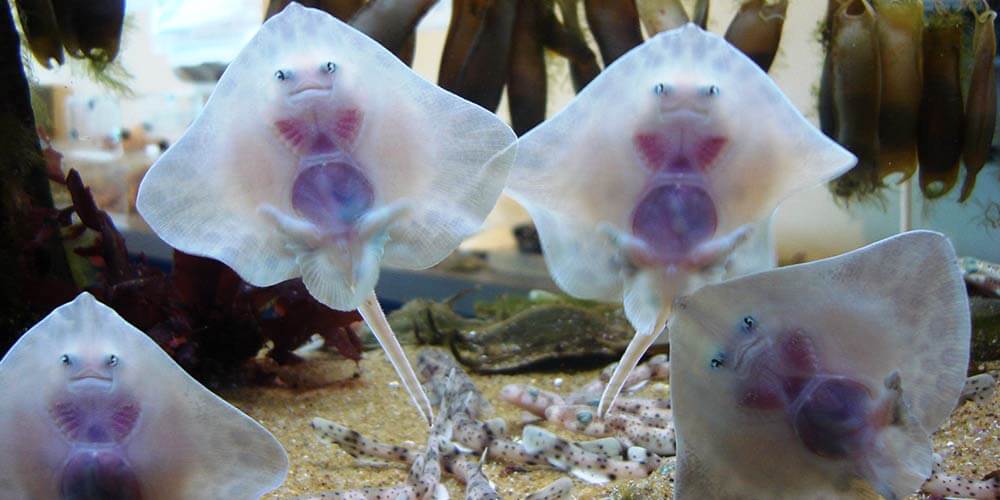
Countershading
Aids in camouflage and helps some manta rays evade predators. Darker skin on top makes them difficult to see from above, bending in with the deep ocean. The lighter skin underneath a ray blends in with the sun on the surface.
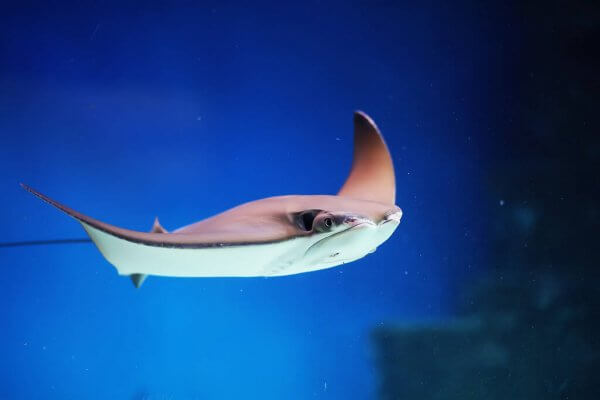
Separating Rays from Sharks
Sharks cruise through the water like torpedoes, while rays swim gracefully like a bird soaring, but are they really related? Yep, they sure are! They are the main groups that make up the Elasmobranch family. Elasmobranchs are fish who have cartilaginous skeletons rather than bone. Apart from this and a few other key features they couldn’t be more different.
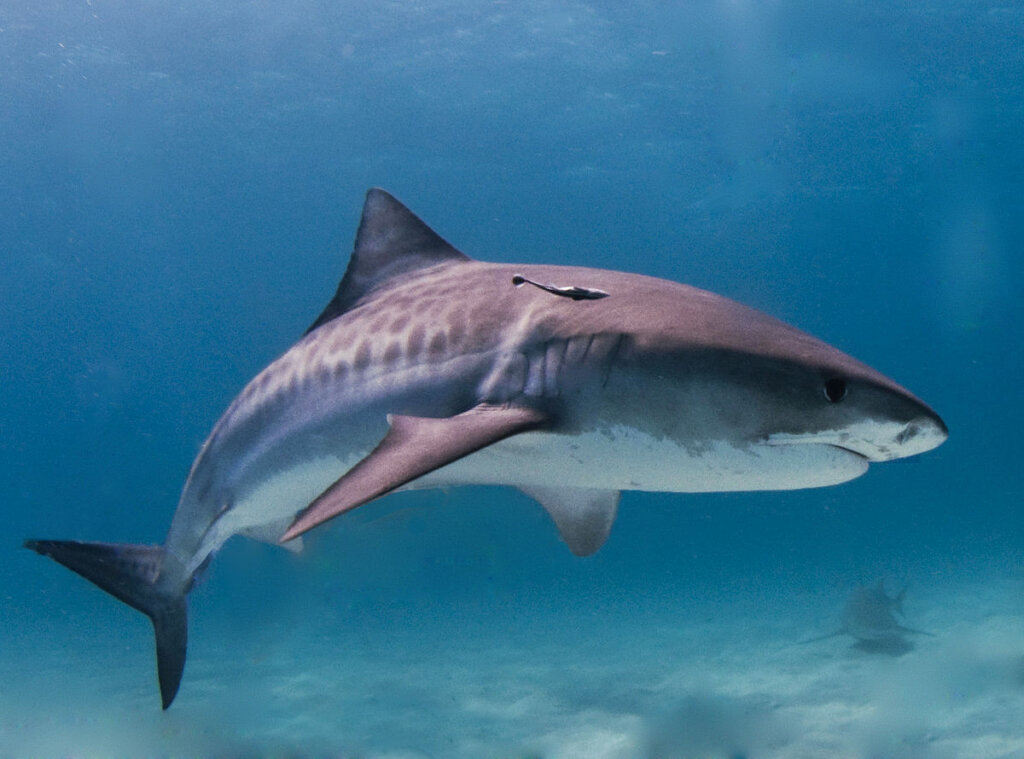
Caudal fin (tail), Spindle shaped body, Gills on side of body, Large Pectoral fins 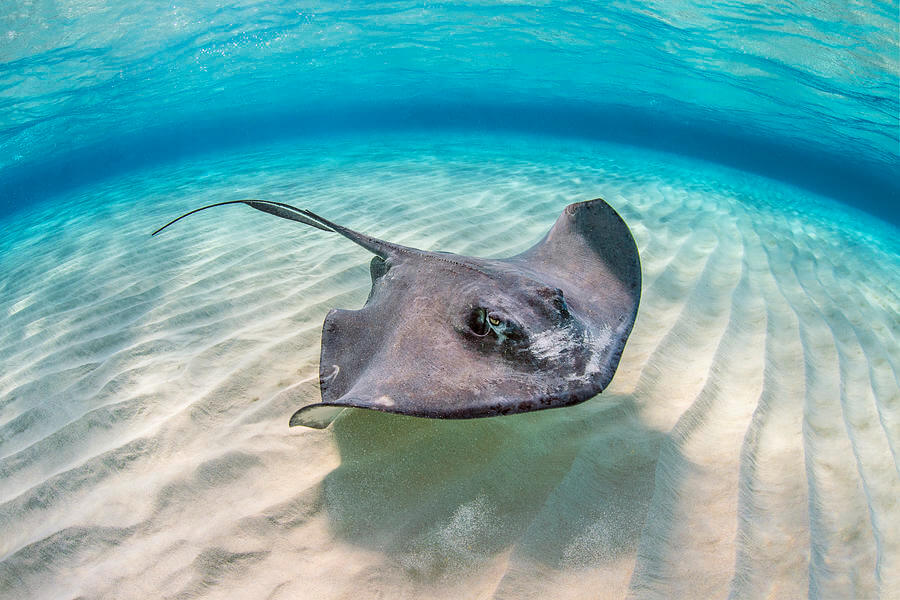
Barb on tail (sting rays only), Flat disc shaped body, Gills under body, Large pectoral fins (fused to head),
The Stingray shuffle
The barb on a stingray’s tail is a valuable asset against predators and is used defensively, not aggressively. The majority of stings experienced by humans occur when a ray is stepped upon. For this reason it is important for people walking in shallow water with known Ray populations to do ‘the Stingray shuffle’, shuffling feet through the sand rather than taking large steps. This helps prevent inadvertently stepping onto the back of a ray, which for them feels like a serious threat and can result in the instinctual use of their barb.
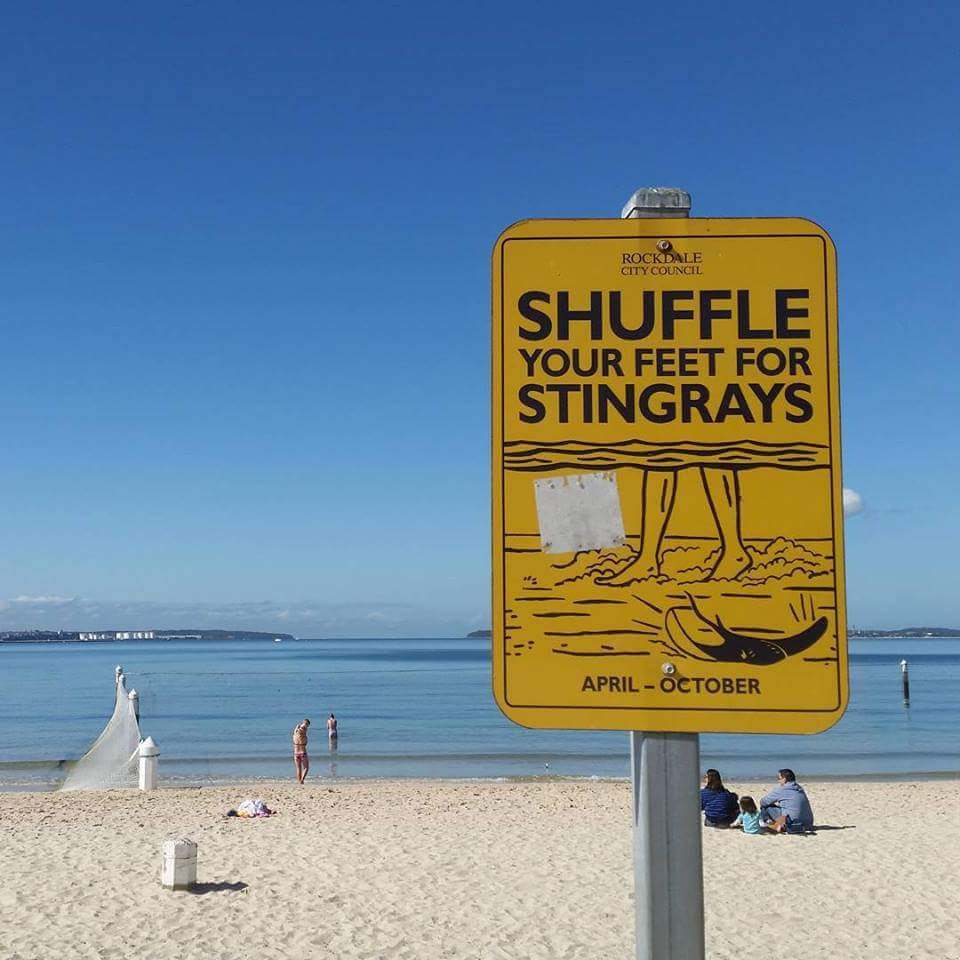
Where do Rays live?
Some rays inhabit in fresh water systems. Most Rays occur in coastal waters close to shore. They use the substrate (sand or ocean floor) to assist in feeding and camouflage. Only a few species like manta ray live in open oceans. Some species have been identified up to 3,000m deep.
Smart and smooth
Rays are extremely intelligent. At SEA LIFE Melbourne Aquarium most rays have been trained to respond to different sounds or visual cues. Smooth rays are particularly smart. Their cue is the ringing of a bell under the water which signals that its time to eat. This is beneficial to the team at SEA LIFE Melbourne Aquarium as individual smooth rays can be target fed ensuring they get specific nutrients like Vetafarm’s own Elasmo Tabs supplement. It also helps to make vet checks and other necessary contact easier to manage.
Centrally located on the banks of the Yarra River, SEA LIFE Melbourne Aquarium takes you on an awe-inspiring journey through 12 amazing zones of discovery including Bays of Rays.
The aquarium is open everyday of the year from 9:30am to 6pm, last admission is at 5pm.
Article by Brianna Lang, SEA LIFE Melbourne Aquarium – Aquarist

